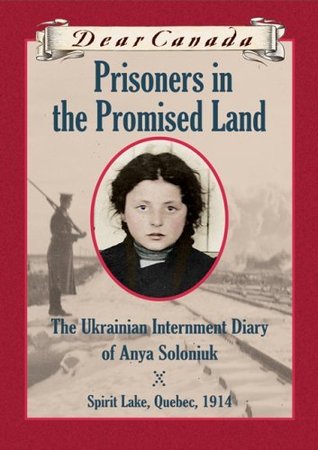My Dear Canada is set to be released in the fall. I just got the cover art on Friday. Here it is:

writes about war from a young person's view #bannedbyrussia
My Dear Canada is set to be released in the fall. I just got the cover art on Friday. Here it is:

Comments are closed.
This one has been in the works since about 2000. The Dear Canada diary novels are quite the thing to write. They take oodles of research but have to sound like they were dashed off by a 12 year old. I loved writing this!
Gor-gee-ous
I love the idea of the ribbon marker.
Helene
Thanks, Helene!
Wonderful! Congratulations!
Thanks, James!!
I am glad to see the story of Ukrainian interments is being told to our children. I look forward to reading it when it is out. Where did you do your research for this book?
Thanks so much! I am so looking forward to this novel coming out! It has been a seven year labour of love, writing it and researching it.
The research was pretty extensive. I used primary documents like archival photographs of Spirit Lake Internment camp, taken by one of the soldiers stationed there. I also read General Otter’s reports, plus his diary (in microform, at the archives). Before the camp was torn down, filmmaker Yurij Luhovy visited the camp and filmed it, plus filmed interviews of surviving camp guards, internees and residents of neighbouring Amos. Even though his film was not completed, I accessed his work through Archives Canada and watched it many times over, taking copious notes.
I also used travel accounts of the time to make sure Anya’s ship journey to Canada in the spring of 1914 was accurate, and checked daily historical weather accounts, so where ever she was, if it rained for real, it rained for her. I also used old maps and directories for Montreal and placed her in a tenement flat that housed an immigrant family in 1914. The places she passes on streets were all there at the time.
I also found first person accounts of being interned, being a camp guard, coming to Canada, and so on. These were invaluable.
I flew to Spirit Lake myself and visited the site of the camp, also Amos, and neighouring communities.
My own grandfather was interned, so one character in the novel is based on what happened to him.
After the novel was finished, Scholastic engaged two professors of Ukrainian Canadian history to go over my manuscript with a fine-toothed comb. After that, a fact-checker did the same. I had included copious footnotes and an extensive bibliography for their convenience, although of course that is all taken out in the published version.
This novel is exhaustively researched, but I love doing research so it was a fun challenge.